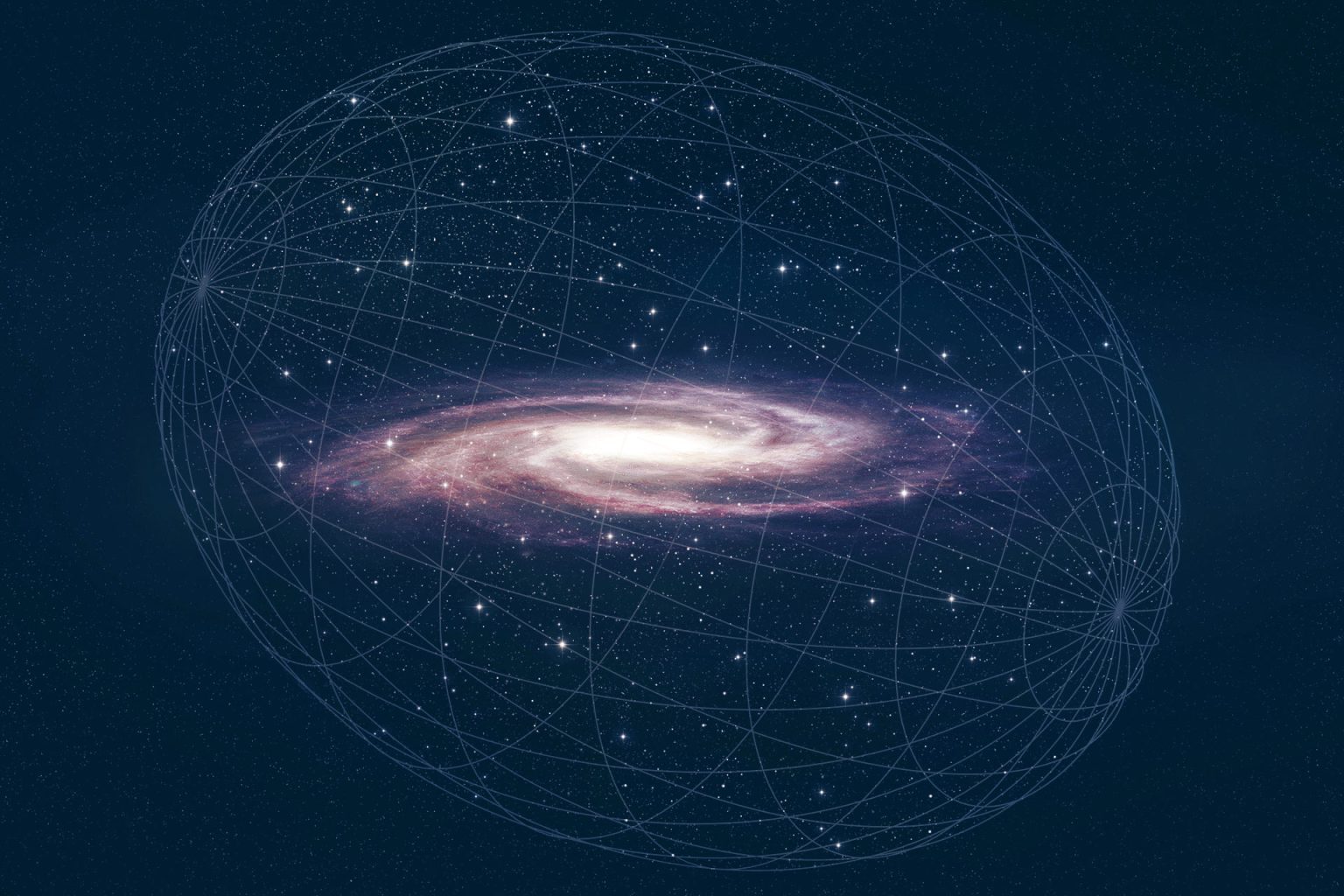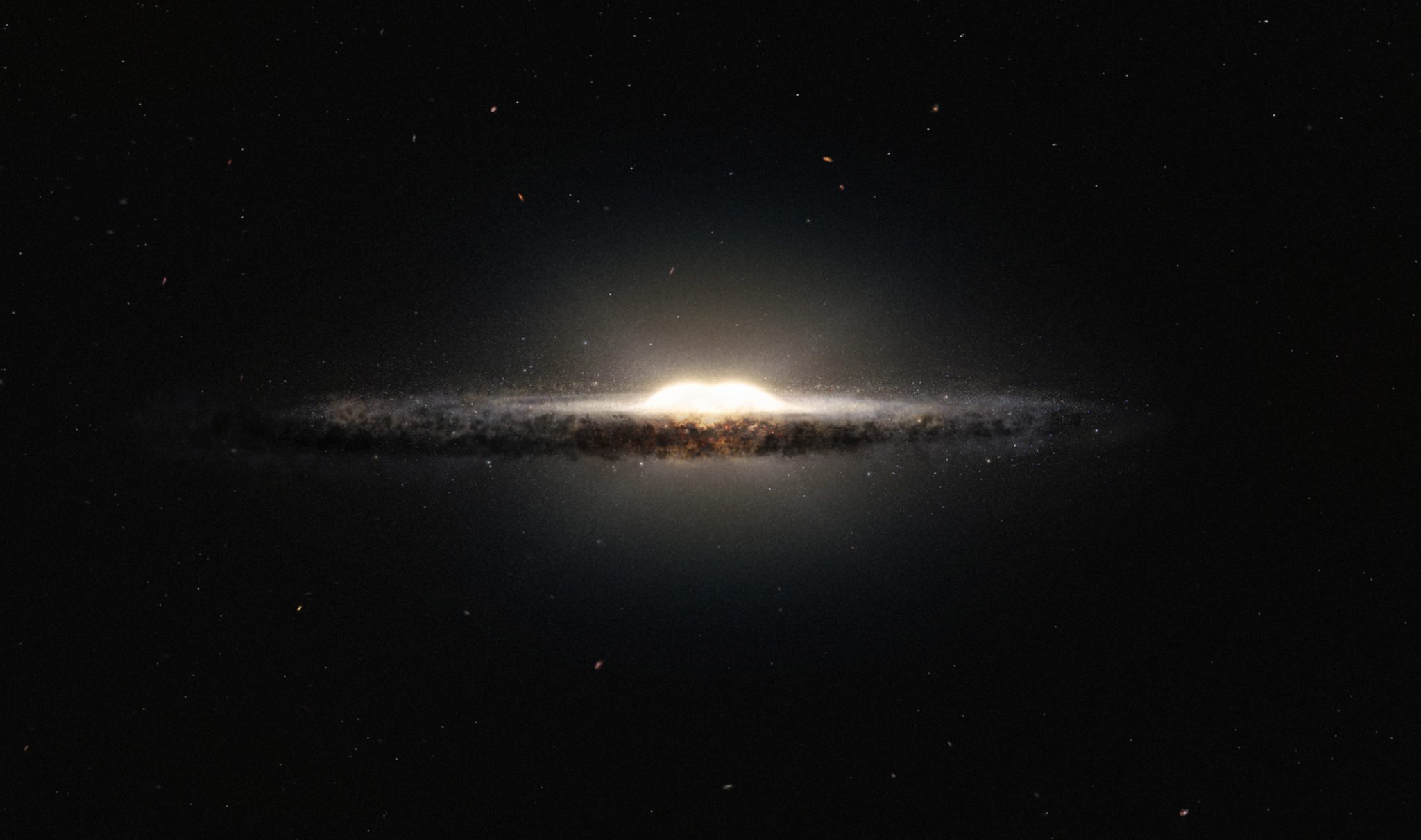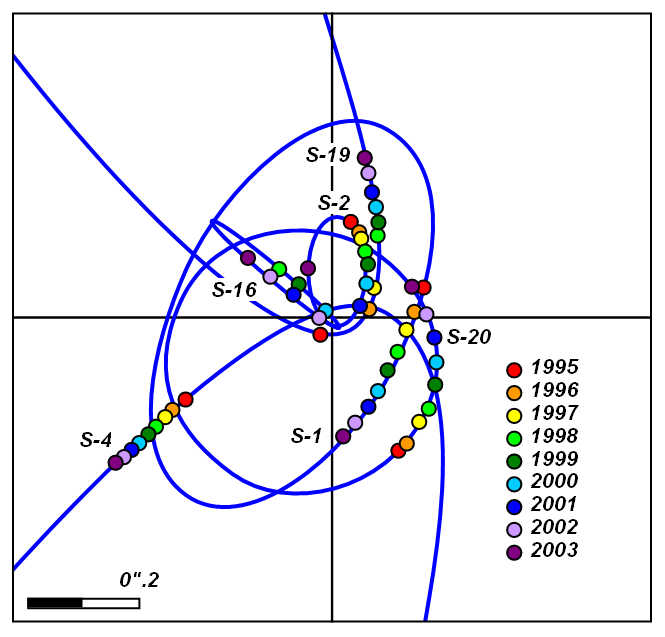Today, everyone knows that the Sagittarius A* object is at the center of our Galaxy. It is a supermassive black hole surrounded by an accretion disk. But what is located around it and how is it all connected to the rest of the Milky Way?

Where the center of the Galaxy is located
The Milky Way Galaxy, of which the Solar System is a part, is a giant cluster of stars, their planets, gas, and dust, consisting of a relatively dense disk with a diameter of about 100 thousand light-years and a close to spherical halo, a much more rarefied shell within which this disk with all its spirals is located.
The question logically arises: what is in the center of the Galaxy? We now know that there is a black hole, Sagittarius A*, whose mass is 4.3 million times that of the Sun. However, it is only a part of the complex picture of the center of the Milky Way, which scientists have gradually revealed over the past decades.
As early as 1918, astronomer Harlow Shapley analyzed the movement of globular clusters located in the halo of our Galaxy. These giant ancient clusters suggested to him that the center of the system they were part of should be in the direction of the constellation Sagittarius. A few years later, when scientists calculated the true size of the Milky Way, it became clear that the distance to the center was 26 thousand light years.

And even then it was clear that earthly observers would not see the center of the Galaxy. Anyone can see this for themselves if they go outside the city on a very clear night and try to find the Milky Way in the sky where it passes through the constellation Sagittarius. You will notice that in a certain place it seems to split in two.
These are dark gas and dust clouds. They prevent people from admiring the center of the Milky Way. And this upset astronomers of the early 20th century. After all, somewhere behind them were supposed to be the stars of the Bulge, a central bulge that was visible in other star systems, but no one knew how it was in our own.
Luckily, in the mid-1940s, Walter Baade found an area near the star Gamma Sagittarius where the dust and gas were not so dense. It was a kind of window that allowed him to see the stars of the blob. According to modern concepts, it is close in shape to a flattened sphere with a maximum diameter of about 9500 AU. This is less than 10% of the diameter of the Milky Way itself, but still a huge amount of space. How can we find the very center of it and see what’s inside?

Approaching a black hole
In the middle of the 20th century, astronomers already knew that it was possible to see through such dense clouds if they used infrared and radio waves for observations. It was in the latter that in 1960 a powerful source of radiation, now known as Sagittarius A, was discovered.
In 1968, infrared studies revealed that there is a radiation source in this range at the specified location, and it has a complex structure. There is a small compact area, a point source of radiation, something like a large diffuse shell around all of this, and several other point sources of radiation.
By the early 1970s, it became known that in the radio range, the central object had similar dimensions – a little less than one light year. At the same time, a huge mass was squeezed into a sphere of this radius – according to various estimates, from 3 to 4 million solar masses. What could it be?

Researchers who studied other galaxies had about the same question. Everything pointed to the fact that the Milky Way should be similar to them, so they should have the same thing in their centers. And everywhere in this place the density of matter was rapidly increasing.
Studies in the mid-1970s showed that there are two dozen sources of infrared radiation near the center of the Galaxy. They are mostly clouds of ionized hydrogen and planetary nebulae. A whole cluster of young hot stars was discovered right next to the mysterious massive object. This was unexpected, because no one expected to see a star formation area there.
In the late 1980s, few astronomers doubted that a supermassive black hole was located at the center of every large galaxy. But the accuracy of the observations still did not allow us to completely reject some alternative versions, such as a giant quasi-star or an extremely dense cluster of supergiants.

It was only in the 1990s that a new generation of instruments put an end to this story, allowing us to determine the orbits of stars located directly in the cluster itself, which was called the S-cluster. It became apparent that they were orbiting at high speed around some object invisible in the images. It could only be a black hole.
What does the center of the Galaxy look like according to modern ideas
The black hole Sagittarius A* has a mass of 4.3 million solar masses. As for its radius, observations show that it cannot be more than 44 million km, i.e., it is smaller than the orbit of Mercury. At the same time, according to the theory of relativity, it should generally be about 12.7 million km.
Modern research shows that Sagittarius A* rotates at 60% of the maximum possible speed. The substance in the accretion disk also has a considerable speed. However, no one knows for sure how big the latter is. The minimum estimate of the radius is 0.492 AU, or about 75 million km, or half the distance from the Earth to the Sun. The maximum possible radius of the radio emission region is 45 AU. However, it is not known whether this entire volume is occupied by the disk or whether it includes the jets of ejected matter.

The accretion disk of Sagittarius A* is incredibly passive compared to other similar objects, and scientists would like to know why. In 2013, they had the opportunity to learn more about it. At that time, a gas cloud G2 approached the black hole at a distance of only 260 AU (i.e., about twice as far as the current distance from Earth to the Voyager spacecraft).
It was expected that something would happen to it, such as breaking up and merging into the accretion disk, but nothing of the sort happened. In total, scientists have found four more such objects within a radius of several hundred AU around Sagittarius A*, and it is assumed that they are double stars in the process of merging.
In general, S-cluster luminaries approach the black hole regularly, as they have a rotation period of less than 100 years. Some of them come to a distance where they could already cross the accretion disk and acquire a speed in the pericenter that is several percent of the light speed.
The record holder here is the star S4714. It is approaching the black hole at a distance of 12.6 AU. This is closer than the distance from the Sun to Uranus. At the same time, at the point closest to Sagittarius A*, it accelerates up to 8% of the speed of light. In general, there are at least 6000 stars within 1 parsec of Sagittarius A* (which is closer than Proxima Centauri is to Earth).

At a distance of about 15 parsecs, i.e., 50 AU, there is a dust ring around Sagittarius A*, in which some not yet fully understood flares occur. The space between it and the supermassive black hole is also filled with stars, and there may be many stellar-mass black holes there as well. At least the Chandra X-ray telescope has found as many as 12 X-ray sources in this small region of space that must be binary systems containing them. Thus, the number of objects that do not interact with the environment at all and are therefore invisible to us must be much larger.
In addition, three candidates for intermediate-mass black holes are located at a distance of several hundred light-years from the center of the Galaxy. These objects are formed as a result of the merger of black holes of stellar masses left over from supernovae. Such intermediate black holes have masses hundreds or thousands of times greater than the solar mass. However, very few of them have been discovered so far.
At a distance of 700 light-years from Sagittarius A*, there is another gas ring in which star formation processes take place. However, the matter in it is very unevenly distributed. A significant part of it falls on the giant cloud Sagittarius B2. Here, in a sphere with a radius of about 100 light-years, a mass 3 million times larger than the solar mass is concentrated.

In general, the central region of the Milky Way is a huge complex of gas clouds, giant stars that are constantly forming from them, and the remnants of supernovae, in the form of which they end their lives rather quickly, by cosmic standards, all of which rotate at breakneck speed around a relatively small and calm black hole.
However, we may be observing all this during the “peaceful” period of the Milky Way center’s existence. Observations of other galaxies suggest that if Sagittarius A* starts actively “swallowing” matter, we will still see fireworks in all parts of the electromagnetic spectrum.


